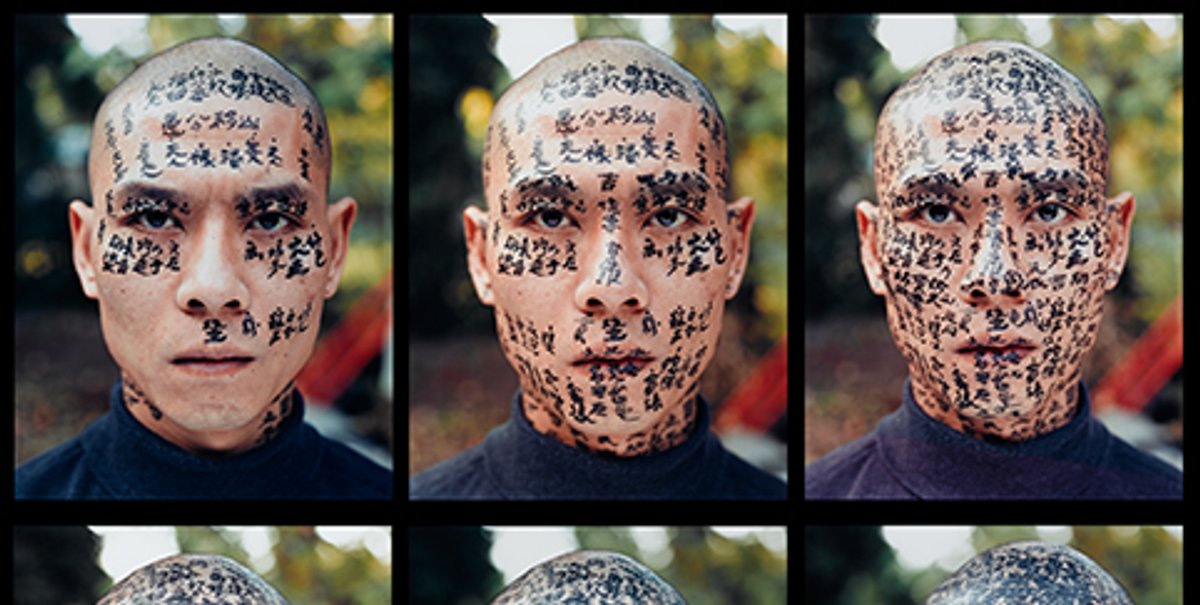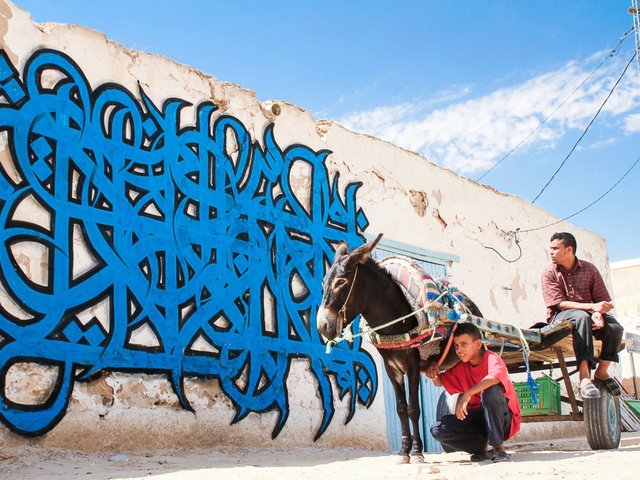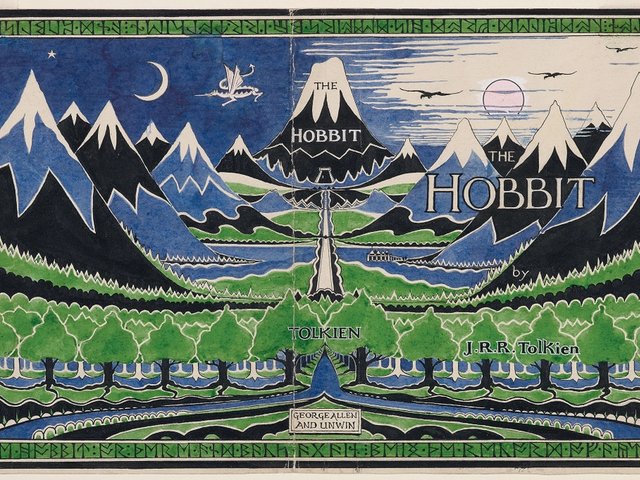The Shape of Time opens this week at the new Centre Pompidou x West Bund Museum Project in Shanghai (until May 2021), organised by Marcella Lista, chief curator of the new media collection at the National Museum of Modern Art-Centre Pompidou.
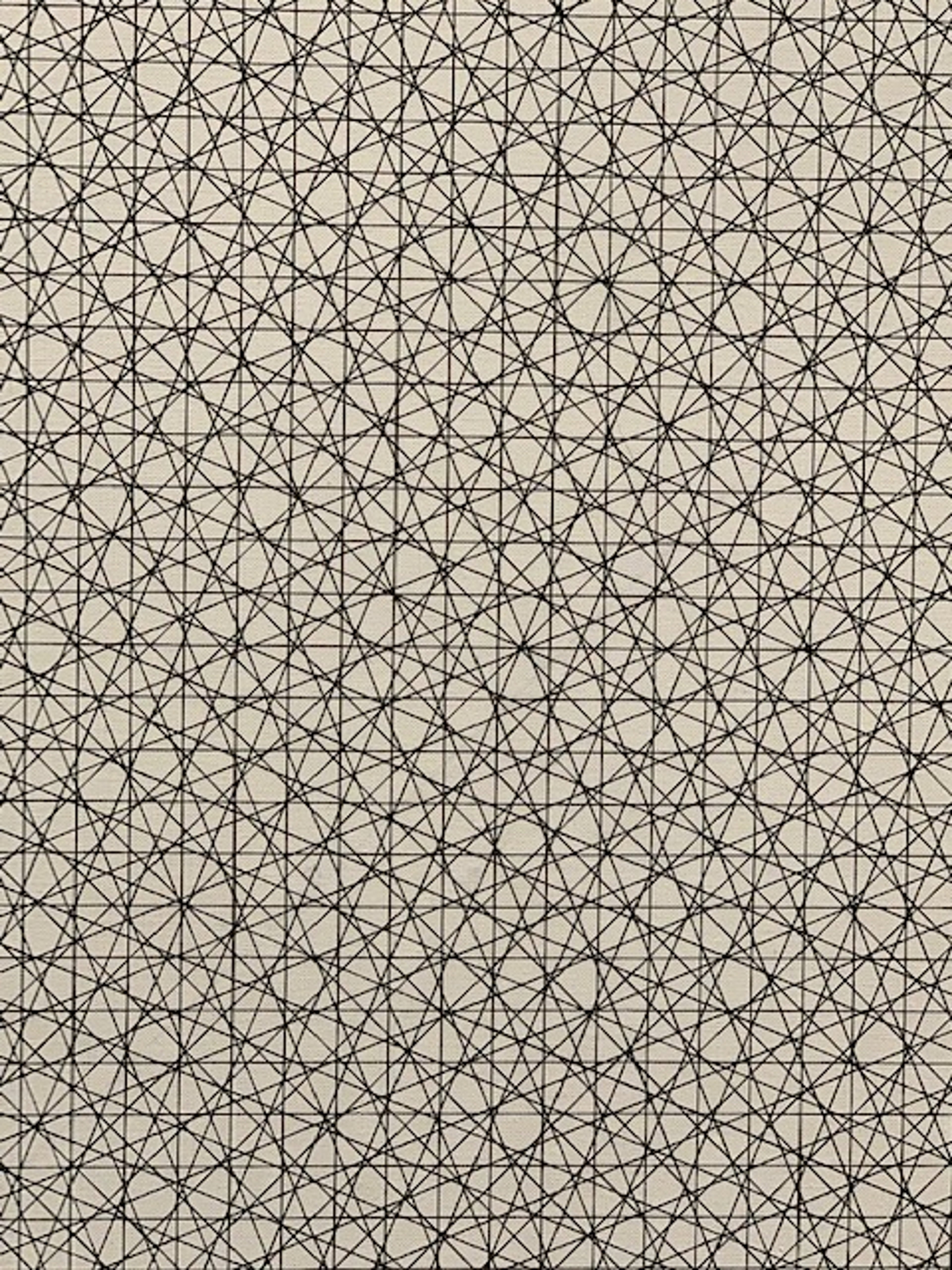
This deceptively simple arrangement of rigorous straight lines echoes the visual vocabulary of ancient Islamic architecture. “The various layers, and the different juxtapositions, create various optical effects from circles to stars,” Lista explains, outlining how the geometric structures within the work causes optical phenomena to pop up in the viewer’s field of vision. In 2009, Morellet wrote in the Tate magazine that a major shock “came from the abstract Islamic networks of lines and repetitive pattern all over the walls of the Alhambra Palace in Granada on my fist visit in 1952”. François Morellet, 4 double trames (1958) © Adagp, Paris Photo © G. Meguerditchian Centre Pompidou, MNAM-CCI / Dist. RMN-GP
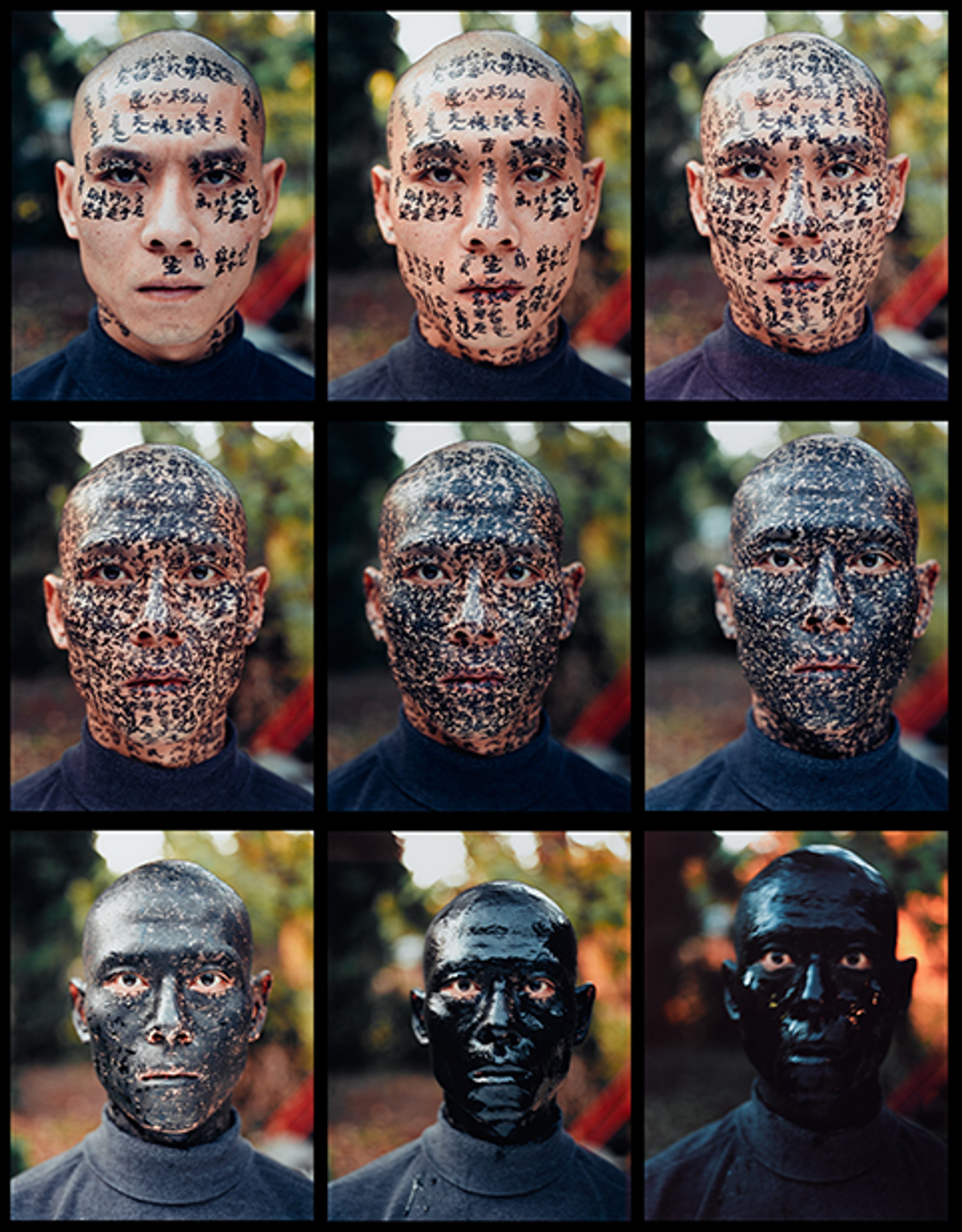
Shanghai-based Zhang Huan made a number of radical, significant body performances in the 1990s in Beijing; Lista stresses that this turn-of-the-century piece documented in nine photographs was a turning point. Zhang asked three calligraphers to write his biography on his face, gradually subsuming his facial features, making him morph into an unsettling, rather ghostly figure. “These different layers of his history make it [the face] completely unreadable,” Lista says. In 1998, the artist declared that: “I cannot say what I am. My identity has vanished.” Zhang Huan, Family Tree (2000). © D.R., Centre Pompidou
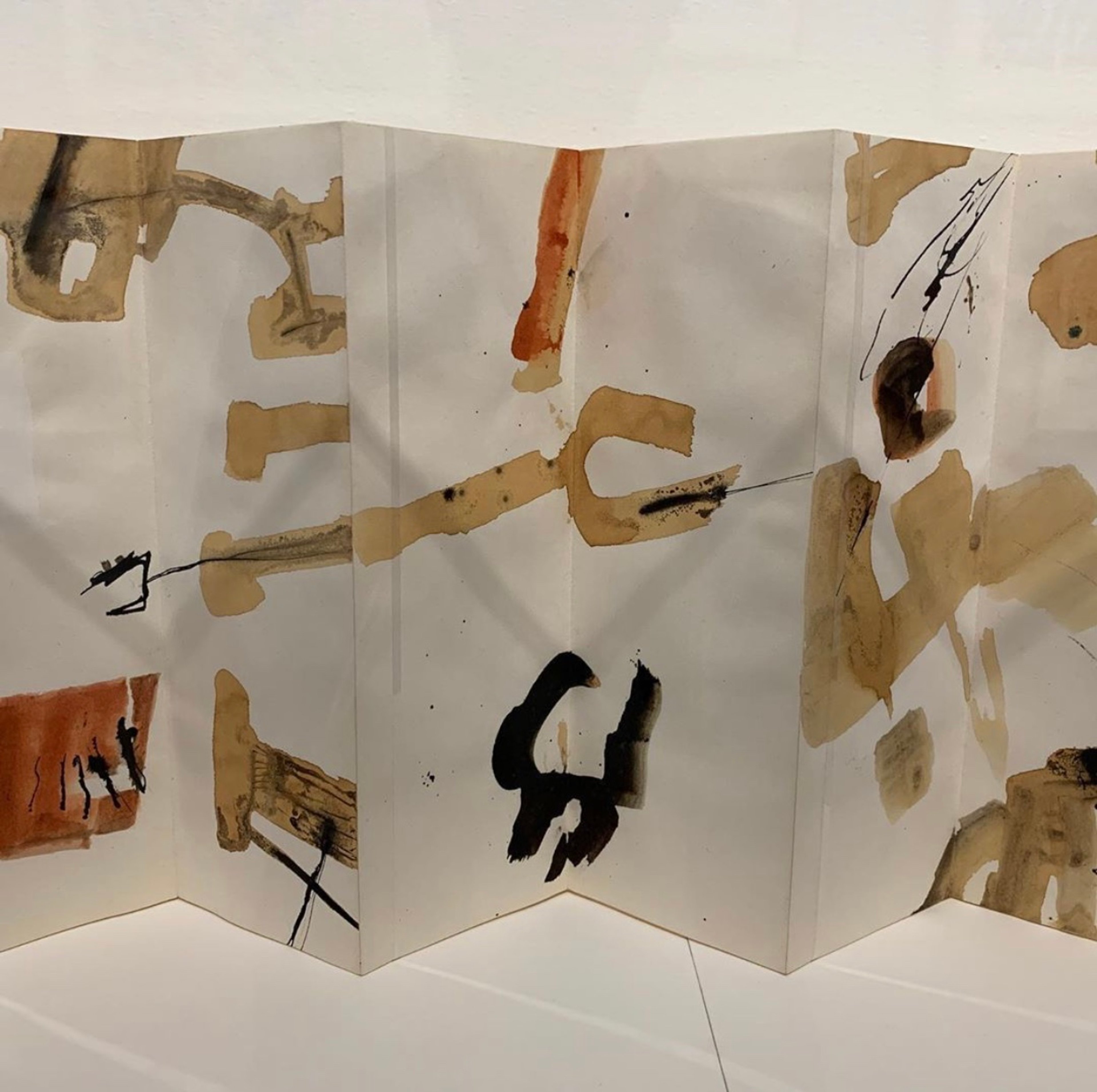
“Adnan started to work on painting in 1960s, creating leporellos [book-format works with folded pages]. It is an extraordinary composition that is not just painting but writing. It is a very intimate language that you can unfold; it occupies the space,” Lista says. Adnan, who was born in Beirut in 1925, was until a few years ago primarily known for her writing (her 1977 novel Sitt Marie-Rosewon the France-Pays Arabes award). Her contribution to Documenta13 in Kassel in 2012 made her an art world star, bringing her small, abstract canvases to new, appreciative audiences. Adnan creates works in a small studio in her Paris apartment, using a palette knife to apply the paint on the canvas. Etel Adnan, Untitled (1960)

Section one of the exhibition examines the development of the Western avant-garde in the shadow of the industrial revolution born during the 18th century. “You had the machine, introducing the idea of dynamism and vital energy,” says Lista. “There is also this idea of the fusion of art and life; we can see it in this masterpiece by Sonia Delaunay.” The picture, she explains, is a rhythmic representation of a ballroom on the boulevard St-Michel in Paris, Lista adds. Sonia Delaunay and her husband, artist Robert Delaunay, would swirl around the ballroom, dancing in clothes they had designed themselves. Sonia Delaunay, Le Bal Bullier (1913)
This deceptively simple arrangement of rigorous straight lines echoes the visual vocabulary of ancient Islamic architecture. “The various layers, and the different juxtapositions, create various optical effects from circles to stars,” Lista explains, outlining how the geometric structures within the work causes optical phenomena to pop up in the viewer’s field of vision. In 2009, Morellet wrote in the Tate magazine that a major shock “came from the abstract Islamic networks of lines and repetitive pattern all over the walls of the Alhambra Palace in Granada on my fist visit in 1952”. François Morellet, 4 double trames (1958) © Adagp, Paris Photo © G. Meguerditchian Centre Pompidou, MNAM-CCI / Dist. RMN-GP
Our picks from the opening show at Centre Pompidou's new Shanghai satellite
The 18-month-long exhibition will showcase highlights from the Centre Pompidou's collection
